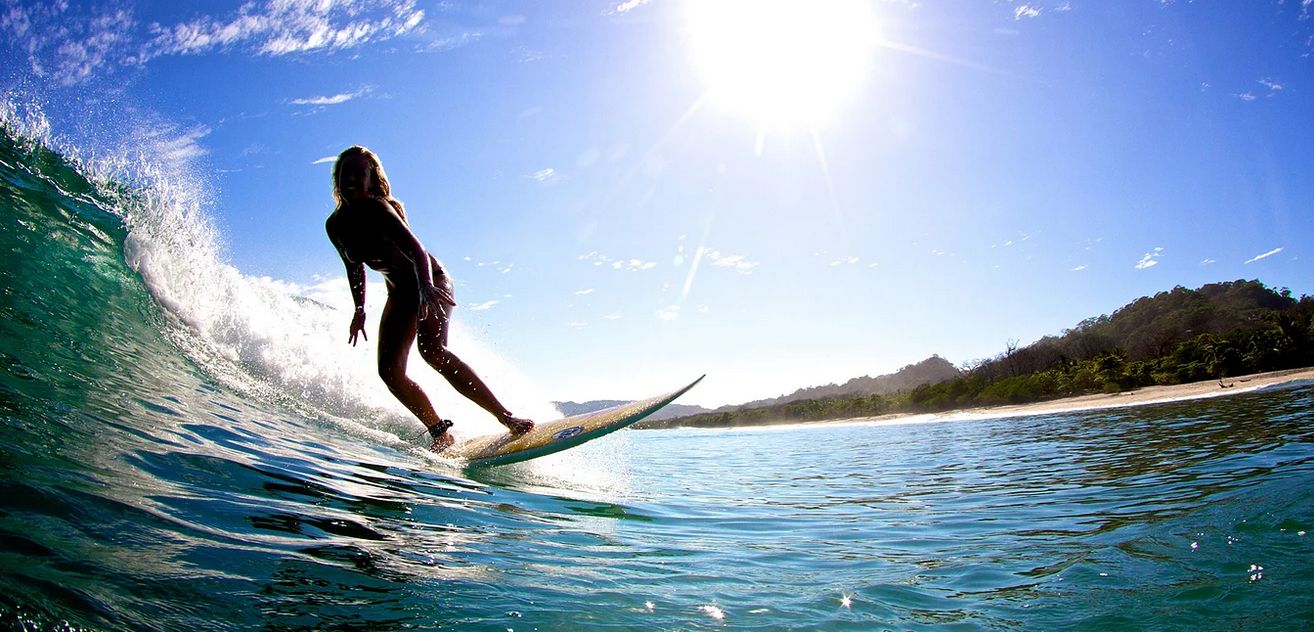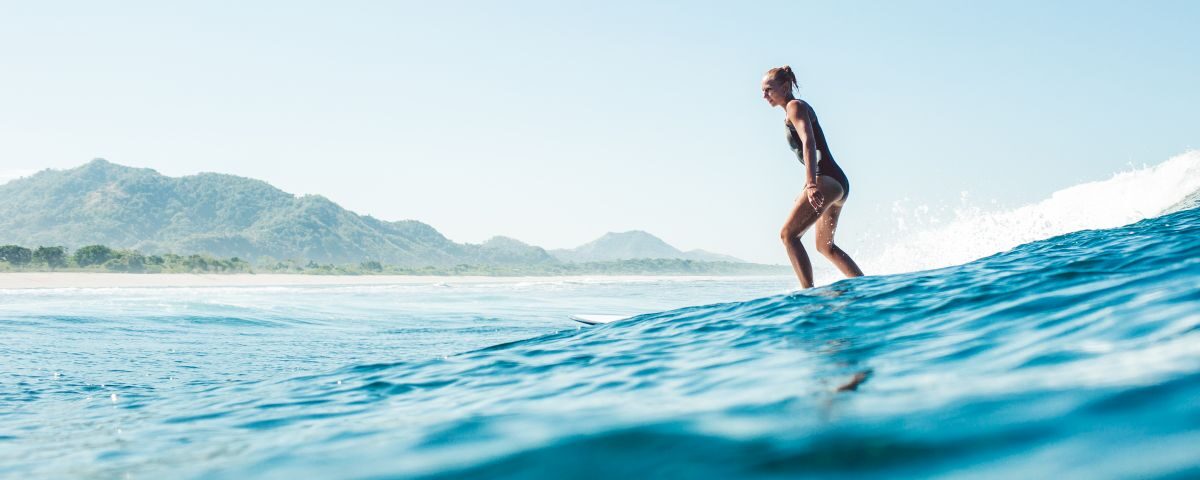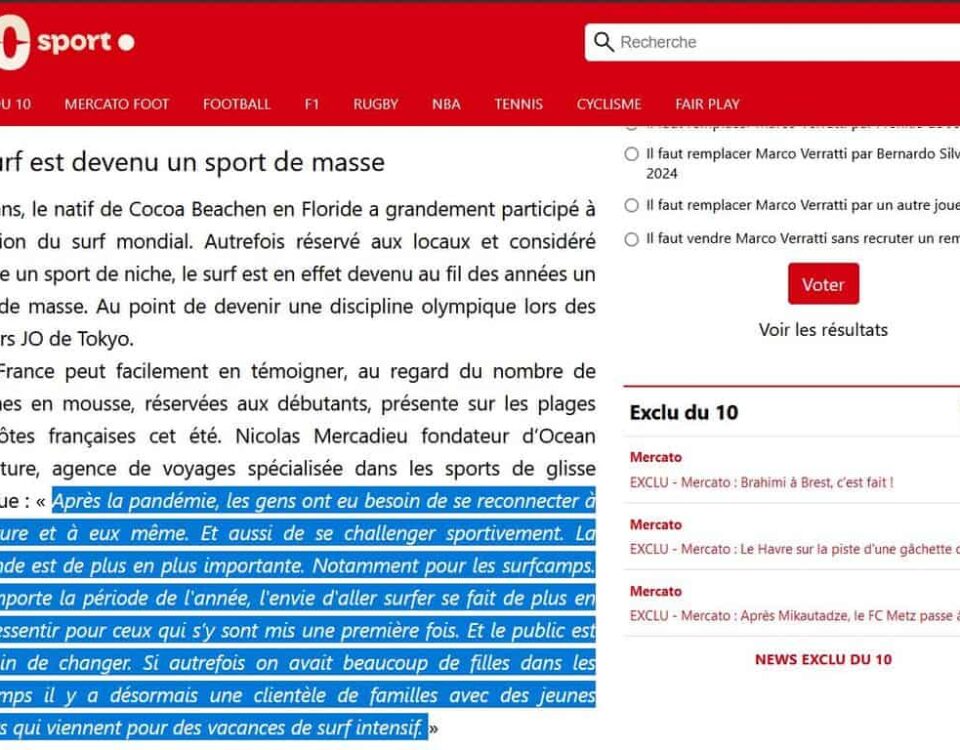
Learn to Surf in Santa Teresa: Everything you need to know to progress!
The best surf spots in Dakhla
Costa Rica’s immense beaches offer a wide choice of spots to enjoy this passion to the full. Even beginners can find places where they can enjoy the wind and waves in complete safety.
However, there are certain seasons when kitesurfing in Costa Rica is more suitable, due to the temperature of the water, the air and the strength of the wind. Costa Rica has a tropical climate with two distinct seasons: summer and the rainy season.
The dry season runs from December to April, while the wet season runs from May to November. Costa Rica’s geography gives rise to three different climatic zones, with a temperate climate in the central valley, a humid tropical climate in the east and a tropical Pacific zone in the west, with very hot summers.
We recommend that you kitesurf from April to October, and that you take advantage of the weather conditions. The best thing is to organise 5 lessons during your stay, so allow at least a week.
The middle season is at the end of winter. The water is gradually warming up and the wind is still blowing hard. At this time of year, we recommend taking 3 kite courses for a week’s stay, and taking more on the spot if conditions are good.
Costa Rica has a tropical climate, with plenty of sunshine 7 hours a day and an average temperature of between 15°C and 25°C. It has a dry season from January to April and a rainy season from May to December, which mainly affects the Caribbean regions.
Contenus de la page
What’s the best time of year to go surfing in Costa Rica?
If you want to kitesurf in Costa Rica, you’ve made a very good first choice: it’s one of the best places to go kitesurfing.
These countries have climatic conditions that make it possible to practise this sport more often than in other regions: its vast beaches, sunny climate and strong or light winds making the sea calm or rough, Costa Rica is popular for practising this sport.
In certain months, the weather conditions become true allies of kitesurfing.
From April to October, the weather conditions are optimal and you can be sure of kitesurfing every day.
In Costa Rica, the windiest period of the year lasts 6 to 9 months, from around 6 October to 3 May, with average winds of over 16 kilometres per hour. However, it’s important to bear in mind the water and air temperatures, so we recommend the following months:
April: Spring is in the air.
- Air temperature: 30°C
- Water temperature: 28°C
- Type of wetsuit: 3/2mm or swimming costume
- Wind speed: 17 km/h.
May: The sea is at the ideal temperature for making the most of it.
- Air temperature: 29°C
- Water temperature: 29°C
- Type of wetsuit: 3/2mm or swimsuit
- Wind speed: 16 km/h.
June: Summer slowly settles in and the winds continue to blow with increasing heat.
- Air temperature: 28°C
- Water temperature: 29°C
- Type of wetsuit: 3/2mm or swimming costume
- Wind speed: 15 km/h.
July: Summer is already here, the wind is warm and so is the sea.
- Air temperature: 28°C
- Water temperature: 29°C
- Type of wetsuit: 3/2mm or swimming costume
- Wind speed: 15 km/h.
August: Less strong winds but still good for kitesurfing.
- Air temperature: 28 °C
- Water temperature: 29 °C
- Type of suit: shorty or swimming costume
- Wind speed: 14 km/h.
September: The water temperature is warm and the winds are stronger.
- Air temperature: 28 °C
- Water temperature: 25 °C
- Type of suit: 3/2mm, shorty
- Wind speed: 14 km/h.
October: The wind is still blowing hard and the water temperature is still pleasant.
- Air temperature: 28 °C
- Water temperature: 29°C
- Type of wetsuit: 3/2mm, shorty or swimming costume
- Wind speed: 15 km/h.
March: The wind is still blowing hard, but the air and sea temperatures are a little milder.
- Air temperature: 28 °C
- Water temperature: 28°C
- Type of wetsuit: 3/2mm or swimming costume
- Wind speed: 16 km/h.
Low season in the West Indies :
Although the West Indies are characterised by a mild climate, especially in winter, it is clear that the winds are much stronger at this time of year. As a result, the average wind speed in February can reach 18 km/h.
However, there are several days in these months, from November to February, when air and water temperatures make kitesurfing difficult.
So when you book your kite trip with Oceanadventure.surf, it’s a good idea to check the weather forecast.
On the other hand, don’t forget that even in low season, our kite instructors ensure that you can kite three times in one week.
In any case, our surf camp can also organise wake sessions to improve your stability and technique on the board.
November: The temperature begins to fall sharply and the winds increase in strength.
- Air temperature: 28 °C
- Water temperature: 28°C
- Type of wetsuit: 3/2mm or swimming costume
- Wind speed: 15 km/h.
December: The wind blows, but the sky is cloudy.
- Air temperature: 28 °C
- Water temperature: 28°C
- Type of wetsuit: 4/3mm
- Wind speed: 15 km/h.
January: This is the coldest month in the West Indies. With an average temperature of 3°C, it can be difficult to kite.
- Air temperature: 28°C
- Water temperature: 27°C
- Type of suit: 3/2mm
- Wind speed: 15 km/h
February: The wind is blowing hard and it’s still cold.
- Air temperature: 29°C
- Water temperature: 28°C
- Type of wetsuit: 3/2mm or swimming costume
- Wind speed: 15 km/h.
What to do when there’s no wind?
When there’s no wind and the weather’s not so good, there’s still plenty to do at our kite camp. We offer you the possibility of replacing your kiteboarding lessons with wakeboarding, sup or surf lessons.
As far as equipment is concerned, you can bring your own, but it may be easier to hire equipment on site on a day-to-day basis.






